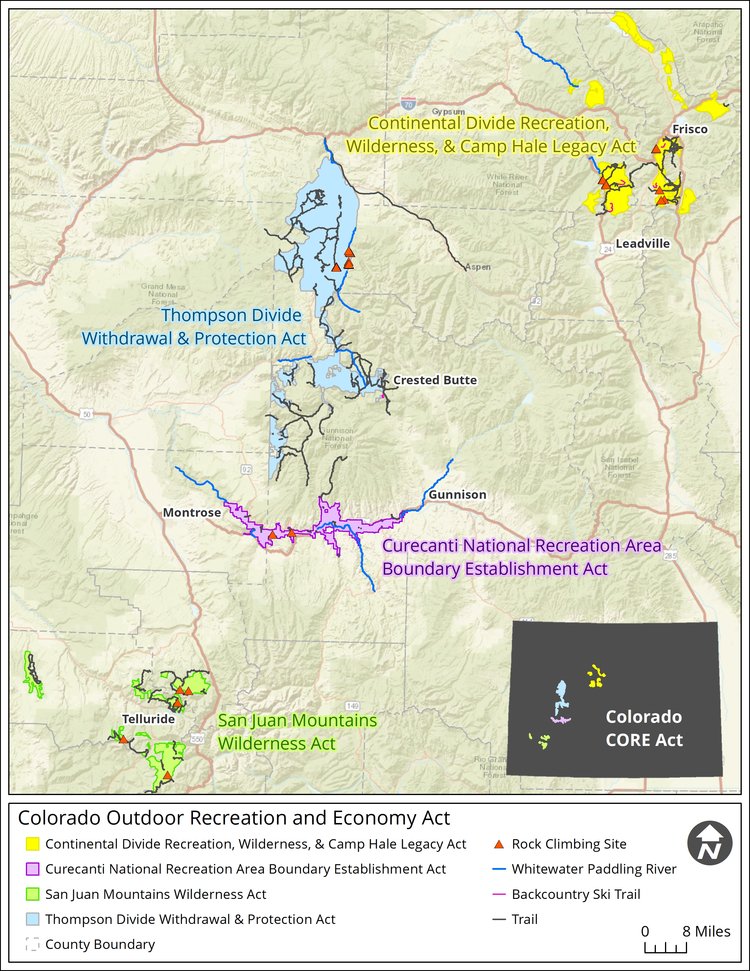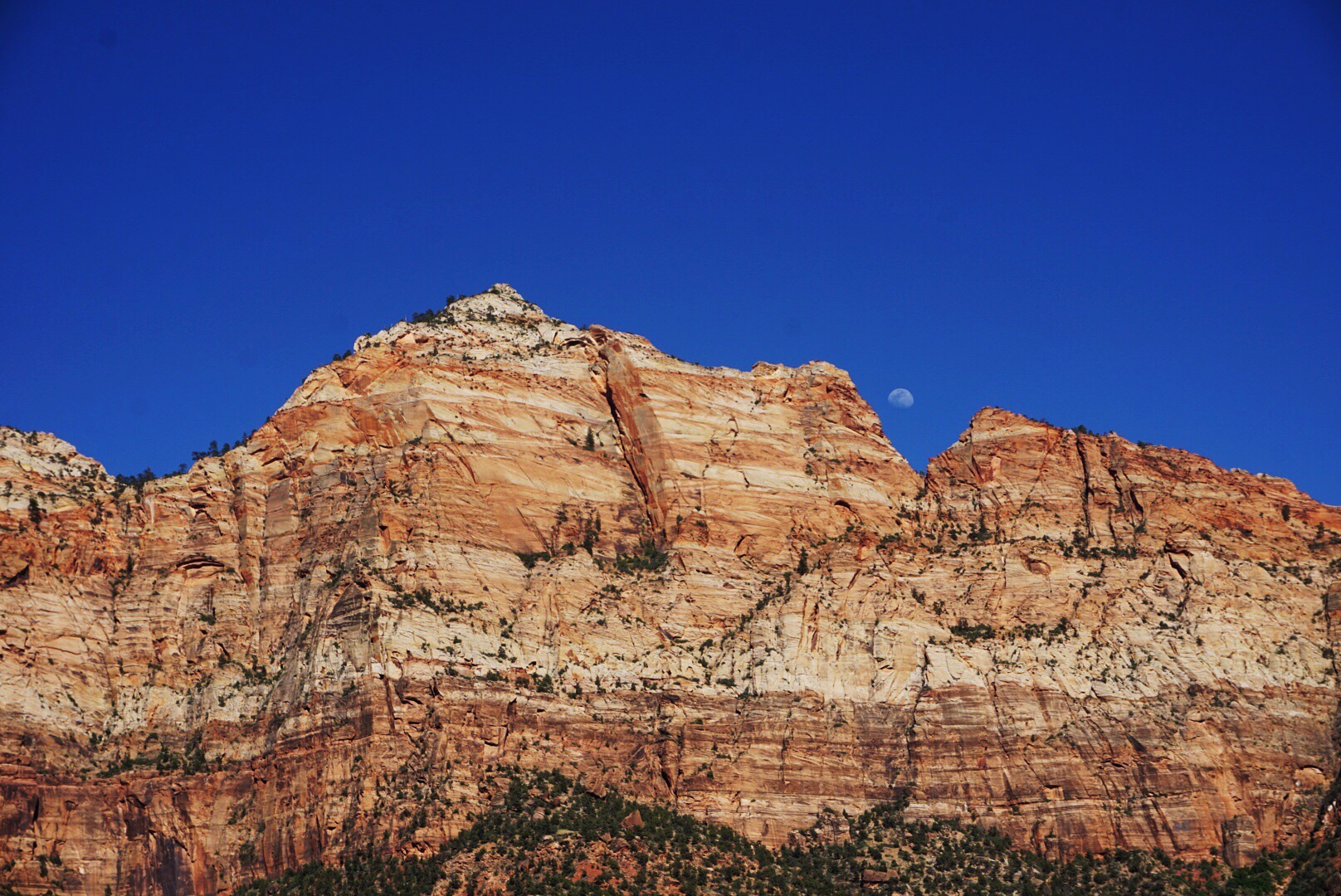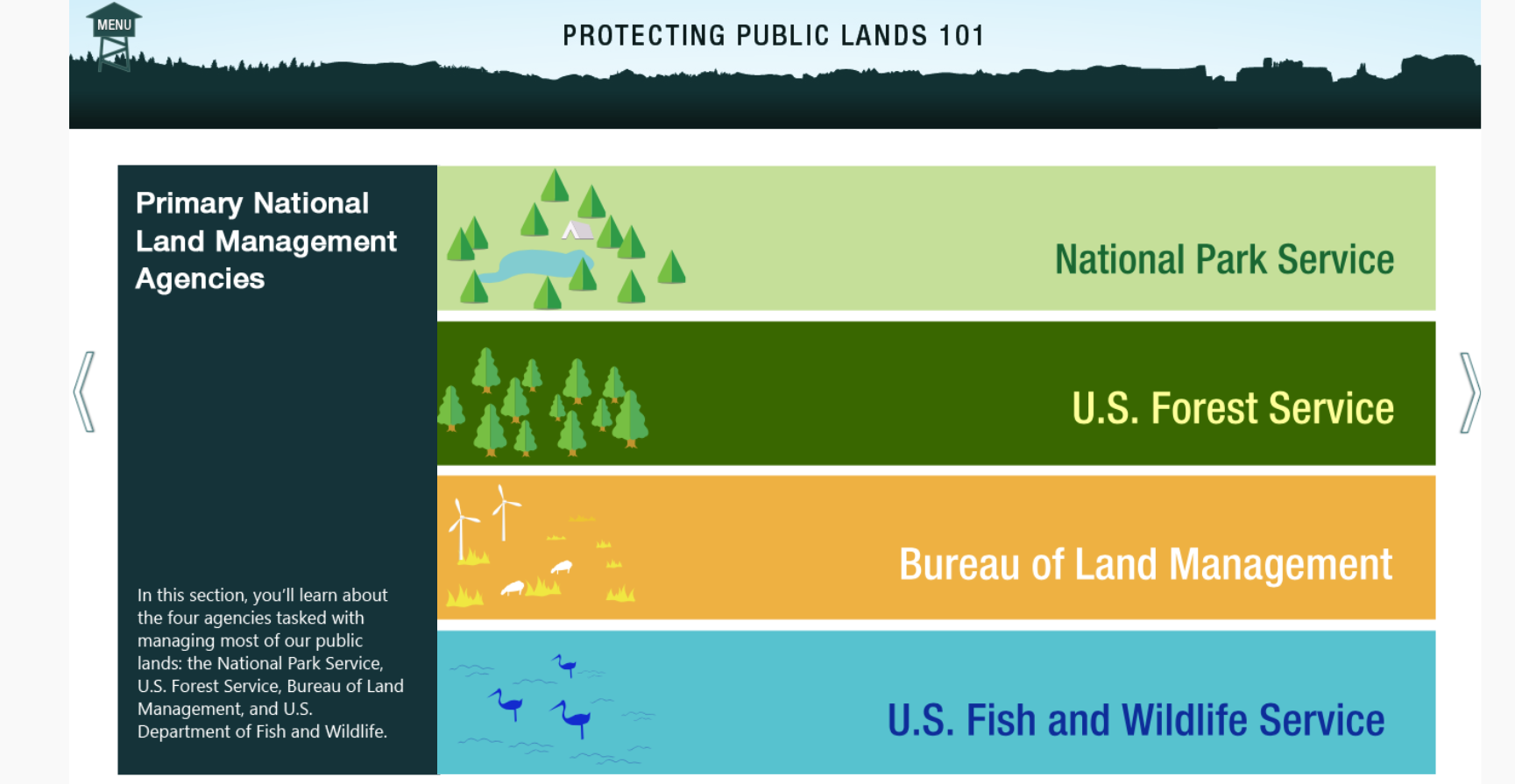Will Plantz trys hard as the sun fades on Johnny Cat in Indian Creek, within Bears Ears National Monument. Photo by AAC member Will McKay
Climbers have a meaningful relationship with the landscapes they love, and advocating for public lands is a critical piece of that relationship. Outdoor recreationists have a powerful connection to place, and that connection makes us a powerful force for conservation. Outdoor Alliance is a national coalition of outdoor recreation advocacy groups that American Alpine Club has been a part of for six years, and together, we work to protect public lands and waters and advocate for climbing and other outdoor recreation. The AAC is the largest community of climbers in the country, and is dedicated to advocating for climbing landscapes and resourcing climbers with essential climbing knowledge and rescue coverage.
Since Outdoor Alliance started ten years ago, the coalition has helped protect 40 million acres of public land and water, secured $5.1 billion in funding for the outdoors, and has converted hundreds of thousands of outdoor enthusiasts into outdoor advocates.
Here are some of important victories that the American Alpine Club (AAC) and Outdoor Alliance (OA) have notched together:
Passing the EXPLORE Act in the House
Climbing on the Diamond of Longs Peak. Photo by Louder Than Eleven
The EXPLORE Act is a first-of-its-kind package of outdoor recreation policy that has been a priority for Outdoor Alliance for many years; the package recently passed the House. It includes sections that will directly protect rock climbing experiences on public lands, a big priority for the AAC.
The Protecting America’s Rock Climbing (PARC) Act is a significant piece of the EXPLORE Act, and has been a focus for the AAC, Access Fund, and the wider Outdoor Alliance coalition. The PARC Act is intended to ensure safe and sustainable access to rock climbing in designated Wilderness areas. It requires federal agencies to recognize recreational climbing as an appropriate activity in accordance with the Wilderness Act of 1964, which states that the placement, use, and maintenance of fixed anchors is appropriate, and ensures that a public comment period is made available to stakeholders prior to any final climbing management guidance being issued.
The AAC has also educated their members about the SOAR Act, joining the AMGA who is one of the principle long-time supportess of the SOAR Act. This is another piece of the EXPLORE Act which will streamline recreational permitting for outfitters and guides, benefiting other Outdoor Alliance members like The Mountaineers, Mazamas, and Colorado Mountain Club.
Now that The House has voted to pass EXPLORE, the AAC and OA are advocating for the Senate to also get it across the finish line. Learn more and write your lawmakers about it here.
Restoration of Bears Ears National Monument
In 2018, the Trump Administration rolled back protections for the Bears Ears National Monument by more than 80% and Grand Staircase-Escalante by nearly half. Since then, the AAC and its partners at Outdoor Alliance have been continuously educating outdoor enthusiasts about the fight to preserve Bears Ears. This included a lawsuit led by Access Fund against the Trump administration, advocating for the monument to be restored, and participating in a public comment on a new management plan for the restored monument.
In 2021, the Biden-Harris Administration restored protections for Bears Ears and the Grand Staircase, which honored the voices of Indigenous communities, climbers, and conservationists alike. The coalition work led by Outdoor Alliance was hugely impactful in bringing outdoor recreationists together on this issue. The AAC is committed to keeping their members updated on future management plans and staying active in this ongoing discussion. The AAC will continue advocating for the role of climbing and responsible conservation by sharing their expertise on land management issues pertaining to climbing, and interfacing with land management agencies, the BLM and USFS, as well as other partners and local and national climbing organizations, to continue to refine the Bears Ears National Monument Draft Resource Management Plan and Environmental Impact Statement.
Advocating for the National Environmental Policy Act (NEPA)
Photo credit: Grey Satterfield
In 2020, the American Alpine Club, and another Outdoor Alliance coalition member, Winter Wildlands Alliance, joined forces to sue the Trump administration for making devastating changes to NEPA. For the past 50 years, the National Environmental Policy Act (NEPA) has ensured that climbers and skiers have a voice in how the federal government manages our public lands. Whether it’s issues like climbing regulations in forest planning, balancing recreation with cultural preservation, or accounting for impacts to the climate from energy development on public lands—NEPA ensures that the federal government incorporates science and public outreach in the decision-making process. NEPA assures that the federal government operates with transparency and is held accountable for the decisions made on public lands. Having transparent decision making and accountability is particularly important to the climbing community as many of our cherished climbing areas are located on federal public lands across the country. The AAC and Winter Wildlands Alliance also petitioned the Biden administration in 2021 to take action to repair the law by restoring critical regulatory requirements that were removed in 2020.
The White House Council on Environmental Quality heard our requests, and began a two phase process to reverse the damaging 2020 changes to the regulations that implement NEPA. The final rule restores critical pieces of NEPA, and the AAC and other Outdoor Alliance members will continue to defend NEPA and ensure strong environmental protections and public comment periods.
Amending the Colorado Recreational Use Statute (CRUS)
Photo credit: Grey Satterfield
Recreational Use Statutes across the United States protect private landowners from liability when they open up their land to the public for outdoor recreation. But a gap in Colorado’s Recreational Use Statute was causing landowners to feel insecure about the liability they faced, and therefore unwilling to accept the risk of keeping their land open to the public for activities like hiking, mountain biking, and climbing. This gap resulted in the closure of such Colorado hiking icons as Mount Lindsey, Mount Democrat, Mount Cameron, and Mount Lincoln. Outdoor Alliance and the the AAC both joined the Fix CRUS Coalition to activate Colorado recreationalists and advocate to update Colorado’s Recreational Use Statute. In 2024, the Fix CRUS Coalition successfully updated the Colorado Recreational Use Statute, when the CO Congress passed SB-58, ultimately strengthening protection for landowners, ensuring Colorado’s recreational opportunities that exist on private lands remain available to Colorado’s outdoor enthusiasts.
Get Involved with Outdoor Alliance
Outdoor Alliance is a nonprofit coalition of organizations that includes American Whitewater, American Canoe Association, Access Fund, International Mountain Bicycling Association, Winter Wildlands Alliance, The Mountaineers, American Alpine Club, the Mazamas, Colorado Mountain Club, and Surfrider Foundation. For 10 years, Outdoor Alliance has united the human-powered outdoor recreation community to achieve lasting conservation victories. Our work has permanently protected 40 million acres of public land, secured $5.1 billion in funding for the outdoors, and has converted more than 100,000 outdoor enthusiasts into outdoor advocates.
For more information, visit www.outdooralliance.org












